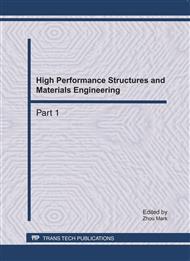p.917
p.924
p.930
p.936
p.941
p.946
p.952
p.958
p.964
Thermal Stability of Graphite/Copper Nanocrystalline Composite Powders Prepared by High Energy Mechanical Milling
Abstract:
To provide reference for choosing technological parameters of subsequent powder densification, thermal stability of 3 h-milled 3 wt% graphite/copper nanocrystalline composite powders were investigated with such analytical methods as scanning electron microscopy (SEM), back-scattered electron images and X-ray diffraction (XRD). The results show that diffraction peak of graphite in XRD pattern is absent because of too small graphite particle. No major variation of grain size of Cu with annealing temperature is observed. Accumulation and growth of graphite phase aren’t seen. The microhardness is nearly constant for the annealed powders. Therefore, 3 h-milled 3 wt% graphite/copper nanocrystalline composite powders possess good thermal stability.
Info:
Periodical:
Pages:
941-945
Citation:
Online since:
March 2011
Authors:
Price:
Сopyright:
© 2011 Trans Tech Publications Ltd. All Rights Reserved
Share:
Citation:


